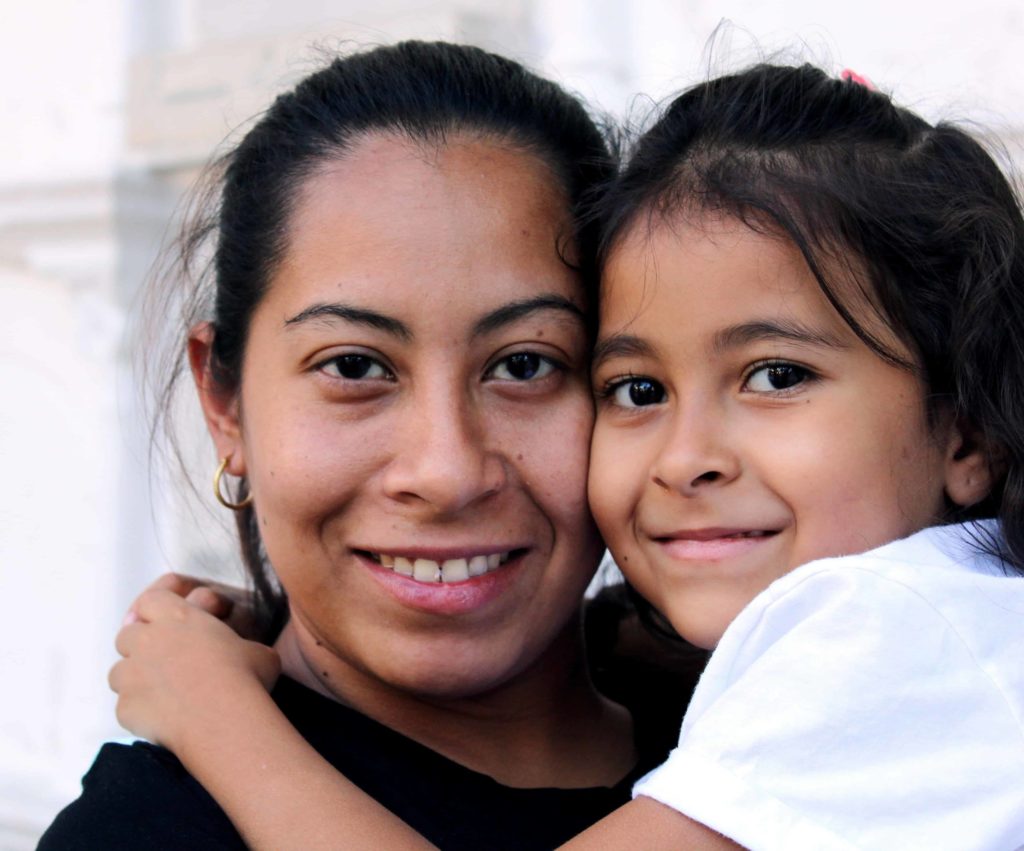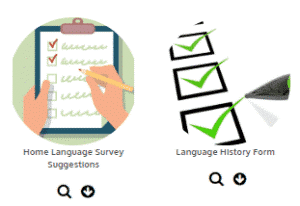As you can imagine, doing speech and language evaluations for recent immigrants looks a lot like our standard second-language evaluations. However, there are a number of key points we need to consider before evaluating so that we can avoid misdiagnosis of communication impairments.
We are continually impressed with the level of expertise and dedication that is evident in the emails we receive. I wanted to start by sharing this question and answer that came through about where to begin with speech and language testing for recent immigrants. We will end with key components of the evaluation that we need to consider to make a good diagnosis.
“It is instructive, makes me feel like I am not alone, and I know change is possible.”

Good evening,
I was hoping to get some advice on how to proceed with a request for consultation we received at our Preschool Assessment Team.
The parent of a 4year 11month old girl visited our office with concerns regarding her daughter’s communication skills. The girl has been in the United States for 15 days. Previously, she was living in Mexico with her grandparents. Mother reported that the girl has been nonverbal all her life and communication is limited to pointing/gestures and some vowel sound production. Grandparents speak Mixteco, and the mother speaks Mixteco and Spanish.
The girl’s dominant language is unknown. Hearing acuity is questionable. A hearing screening was attempted in our office but the girl was unable to follow simple 1- step instructions in Spanish.
I would greatly appreciate any guidance you could recommend on how to proceed with this case.
Thank you,
Ana
Hi Ana
I think that your use of the word “consultation” versus “evaluation” is good here. There is a lot you can do to gather information to identify whether this could be a communication problem. There are several layers over this that will not allow a clear picture of communicative abilities:
- High mobility
- Recent immigration
- Two home languages that are not English
On the other hand, her communication is extremely limited.
I would suggest you do a parent interview asking very direct questions about what she says or not. You want to get a “conceptual” language sample to get a sense of her vocabulary. Conceptual, vs. Comparative means that if she has the word DOG in Spanish and Mixteco that it counts as one concept.
We have some parent intake forms on our Evaluation Resources Page. As far as communication goes, download the Apples to Apples Milestones from the same page and check out all of the language difference vs disorder handouts. These are researched facts that are true of most languages.
For example, mostly all 1-1/2-year olds have 50 words, mostly all 2-year olds make 2-word utterances. All children should be fully intelligible to their close family members by age 3. Her situation included.
Hope that gets you moving in the right direction.
Scott
Scott,
Thank you so much for all the valuable suggestions. Since parents have limited social services/resources to address the hearing concerns, how would you address this issue? Would you proceed with the other parts of the assessment?
Thank you in advance,
Ana
Yes,
But you have to establish hearing during testing. There is a good chance that she does have hearing issues based on how she is speaking.
Ask parents about history and number of ear infections. Also, ask about the latest ear infection.
Do some informal tasks to see if she responds to different sounds in the room, like crinkled cellophane, a whistle, maracas, “sssssss,” and so forth. Clap behind her head and see if she turns.
You also need to do informal vision testing. Can she grab tiny objects that you name? Can she identify people in a photo on a phone? This will tell you that she can see the testing prompts which can be as small as 1×1 inch. You can also ask her to match small pictures at a distance. Show her a picture and give her four to choose from to see if she can select the match.
Then you need to write that up as part of your evaluation. Something like:
Current vision and hearing status is not available. CHILD’s vision and hearing were informally evaluated by… Vision and Hearing were deemed adequate for testing purposes. It is suggested that vision and hearing should be tested at the first available opportunity (also add this last sentence to the report summary).
Too many kids go too long without this getting established. So, own it until the next professional (teacher, nurse, counselor) picks it up and keeps checking. I even met a family at a hospital once to translate for them when they were offered a free test.
Best Regards,
Scott
As you can see in this example, there are many considerations for this child and her family–dual language exposure at home, recent change in home setting, primarily a non-verbal communicator as an almost-5-year-old, undetermined hearing and vision. Our field is complicated, and each person’s communication outcomes are influenced by many factors. In this case, Ana thoughtfully walked through the various areas of a potential assessment. Her efforts will surely provide meaningful communication outcomes for this child.
Four Specific Considerations for Speech and Language Evaluations with Recent Immigrants

As you can see by Ana’s questions, there are different language barriers for immigrants that go above and beyond second-language issues. Account for these four and you will feel much more confident about making a diagnosis:
- Inadequate or No Vision and Hearing Status
- Normally when we work with a 5-, 6-, 7-year-old we don’t think much about vision and hearing if it isn’t already in the folder. They have been screened a billion times already right? Do a simple screener to validate your testing like in the example above. Skip this and you may be misdiagnosing articulation, mutism, and I have even seen Autism (!).
- High Mobility
- We can’t help in this area but we can ask the parents if they were concerned before. Sometimes they say no. However, I have also heard:
- “She attended a special school in Mexico.”
- “We were evicted and that’s why we moved in with my sister in Houston. Before we left, they were doing some kind of testing.”
- Reduced Education
- A child can appear to be impaired but they have just never set foot in a school or interacted with children in a school setting. Yes, they are “performing below grade level.” But, that isn’t a disorder if they’ve never had the opportunity to try.
- As an example, I worked with a 5-year-old girl who was referred for not speaking and Autism. She had been living with her deaf grandmother in a one-room apartment in an unsafe city, so she never went outside to play. Both parents were both working two jobs and didn’t get home until she was asleep typically.
- Stress and Trauma
- People speak less or incoherently when under stress or after having experienced trauma. That’s true for all of us. Now imagine experiencing one or all of the following:
Challenges Some Immigrant Students Face
- War, hunger, and/or poverty
- Leaving all known family and friends
- Leaving behind or losing almost all possessions
- Long, arduous journeys
- Fear of separation from parents
- Dealing with a new culture, language, and country
Stress and trauma cannot be ruled out during speech and language evaluations with recent immigrants, and to be honest it is outside our scope of practice. However, can you see how the stress and trauma new immigrants face can affect their communication? Don’t assume that all immigration is stressful but if you know the family had a difficult time, give yourself permission to ask for an extension of the testing window or share with the parent that you would like to wait 90 days to allow their child to acclimate to her new environment before getting consent for the evaluation.
Resources and Citations
Use Books about Immigration in Speech Therapy
Language, Culture, and Adaptation in Immigrant Children
Psychological assessment of immigrant children: Logic or intuition?




You mentioned using the DAYC for good questions…would you use its scoring when testing 2-3 year old bilingual student?
Yes, and No. Good Question
Putting together these standardized tests require soooo much work and lots of really smart and dedicated people. I have been involved in many of the field testing projects for some of the bigger evals that we use plus we standardized two tests of our own. So my hat goes off to anyone working in this direction. I think our field is too quick to criticize the tests we use. On the other hand, if the test wasn’t normed on the population that we are testing then the numbers are not applicable. What to do?
I use the standardized tests because they typically are indeed great. But with 3 caveats. 1) I write a paragraph that says: This test was not normed on this population – therefore the items were administered for data collection purposes and each item analysed taking into consideration the child’s home language and culture. 2) Then I just do simple math and explain the number of questions that a child got right per age group. CHILD correctly completed 4/5 tasks expected of a child age 3.0-3.5. The one he missed was… CHILD completed 2/5 tasks expected of a child age 3.5-4.0. He was able to… He was not able to… 3) then I look at the linguistics significance of the questions related to the home language. For example, CHILD uses two word utterances: In Spanish I would count Damelo (Give it to me) which is in essence a single word but a longer syntactic idea. Use the tests because they are good tools. But “explain” your results because we can’t use the scores. This is more difficult for clinic SLPs who require a score to get insurance to get on board – I am afraid. We do this same thing in our clinic reports thought too.